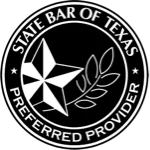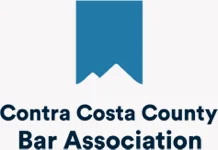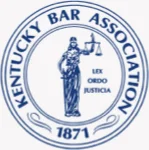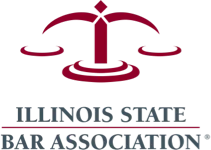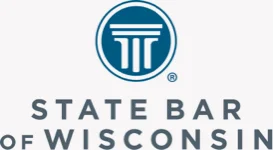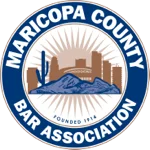No map for your esteemed online visitors? That’s like asking someone to play Where’s Waldo after getting into a car accident. It’s a terrible, terrible idea and they’ll never ever find Waldo even if they want to.
Instead, you should create a Location page on your website to lead visitors right to Waldo…or rather, your front door. You get it, you’re Waldo in this scenario. You want them to find you, after all.
But what goes into a law firm Location page website design? Certainly not a bunch of Odlaws and distracting secondary characters with irrelevant props.
Here’s what every law firm needs to know about creating a Location page, including content and style tips and why this page can make or break your business.
Provide immediate context with an accurate, clearly colored map including your office location
The key purpose of a map is to help someone find you as easily as possible. It sounds simple, but lots of firms get distracted with aesthetics on their websites. Don’t hide the most important information! Help people know where they are at all times.
Share a dynamic, interactive map that allows a visitor to visualize your office location easily.
It’s better to embed Google Maps than use a screenshot. This allows someone to zoom in and out to understand how close your office is to known landmarks. It also enables them to enter their own address and calculate a route.
Active, updated maps not only aid in navigation but provide a sense of transparency.
Exterior and interior photos can showcase your office space and help people find you
Photos can build trust and comfort with people who are considering coming to your office space.
The visuals you select should showcase your professionalism as well as provide data for potential clients. This includes exterior and interior photos.
Think about it—you’ve probably looked at pictures of restaurant interiors when trying to find a dinner spot. You’re looking for a place that looks clean and enticing, possibly from multiple angles with good lighting. This also tells you that real people have been there recently and felt moved enough to document the experience.
Photos are as much about emotions as they are facts.
Exteriors: Include a high-quality exterior photo that highlights the professional and welcoming facade of your office space, if you have one. This visual cue helps in establishing credibility and creating a positive first impression. It will also help them locate your office upon arrival.
Interiors: Offer a glimpse inside your office by showing the waiting room and your office, if it’s an attractive space. These photos make a promise that your client will feel welcome and safe in your office—and that can be enough to get someone out the door and into your firm. As a bonus, your new prospect will feel an immediate familiarity when they enter your office.
Don’t be shy about sharing photos of your team
Your firm is like any other business, like a hospital or a cafe. While you probably care about the condition of the building, we bet you also care about the friendliness and skill of the actual person delivering the services.
Humanize your law firm by featuring a photo of your staff assisting clients.
Hire a professional photographer or a savvy intern for this. Trust us, stock photos and overly staged pictures can do more harm than good.
Once your office photos have established a certain level of trust with a prospect, your team photos will add a personal touch. This fosters a connection with someone who may be seeking a trustworthy and approachable legal team.
It’s all about building a case for trust with your prospect, step by step and photo by photo throughout your Location page.
Include essential information to facilitate immediate user comfort, user action and plan-making
Now, there are a few pieces of critical information that every firm should provide regardless of its practice area or geographic location.
Remember—the goal of the Location page is to help a prospect feel the desire to contact your office and then make a plan to get there.
Parking and accessibility
Clearly communicate parking options and accessibility information.
Include details on nearby parking lots and how much they cost, or if you have designated parking spaces at your office. Share public transportation options from common neighborhoods in your area.
Be specific about accessibility, such as if you have ramps, automatic doors, steps, if you welcome service animals, if you can hire an interpreter and if you have wheelchair-accessible bathrooms.
Hours of operation
Display accurate and up-to-date hours of operation, including holiday hours and phone hours (if they differ from office hours).
Accurate hours can aid in managing client expectations. They also ensure that visitors know when your team is available to assist them, so they don’t plan a trip to visit your office when no one is present.
Engaging copy
Do not lose your visitor’s attention on the Location page! Your copy should reflect your firm’s brand voice and values, even on the Location page.
Your Location page is a potent opportunity to either seal the deal or lose the lead, and your language can make all the difference.
The prospect has come this far, all the way to your Location page. They must be seriously considering retaining you. Do not flop the pass with limp language!
Contact information
Finally, you must provide a way for someone to reach out to a real person.
It’s tempting to think that you’ve answered all possible questions. However, you’re guaranteed to encounter prospects with additional concerns. So, make it easy to get in touch.
Provide multiple contact options, including phone numbers, an email address and a contact form. Accessibility is key to encouraging potential clients to reach out. Suppress your ego and open a channel for communication, and you might be surprised at how many more inquiries your firm receives.
A strong location page can help you grow your business
If they can’t find you, they can’t hire you—it’s as simple as that. The Location page is a must-have piece of content for every law firm.
But a well-designed Location page can do far more than just help someone get to your parking lot.
Of course, if you create a strong Location page, you increase the chances of prospect engagement. Furthermore, by conveying key information clearly, you’re building trust and transparency from the get-go. This creates a meaningful foundation for any future relationship with your potential client.
If you’ve produced a particularly memorable Location page, you might even encourage a prospect to come back in the future or share your page with a friend.
Finally, Google cares about your Location page because it impacts the overall user experience (which is a ranking factor in the SERP). Easy navigation, relevant visuals and concise information lead to a seamless online journey and increase the likelihood of conversion.
Google wants them to find Waldo, too.
Final words
Whether you’re revamping your page or creating a Location page from scratch, remember that your goal is to instill confidence in a prospect. So don’t clutter the road to your office with distractions or make them guess what they’ll discover when they arrive.
Lay out your information concisely, cleanly and explicitly. Tell them exactly where to find Waldo. Tell them what he’s wearing, whether his office has a ramp and what time he gets to the office in the morning.
OneFirst designs include design-tested Location pages that can help your firm boost conversions. We know where Waldo is.




